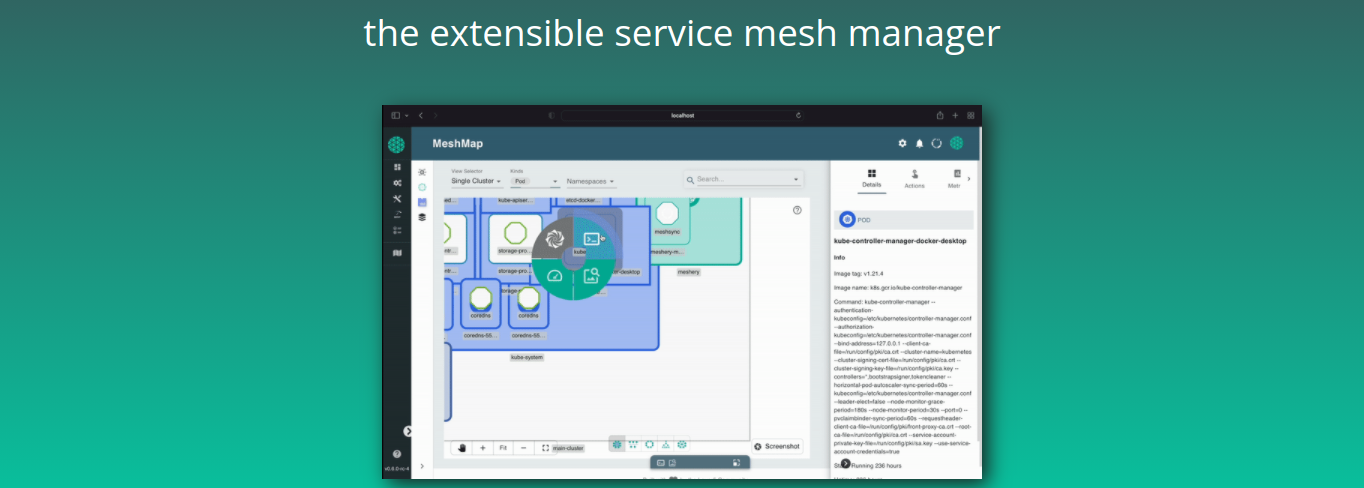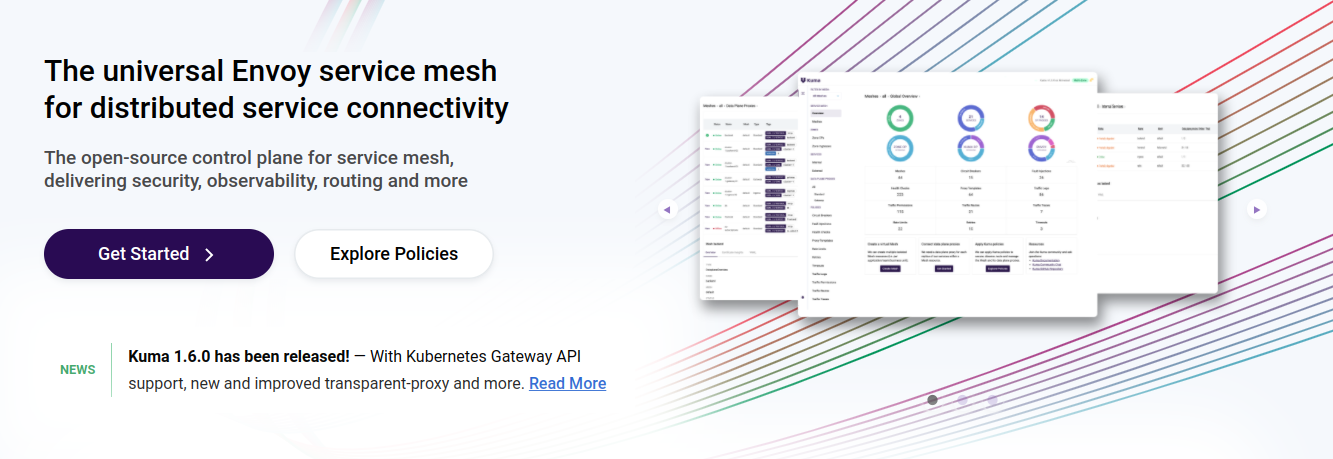When working with microservices, your applications consist of many different small-scale services that have to communicate to function together as a system.
The microservices communicate with each other in many cases directly between the individual services, which makes them inefficient and prone to failure, but this is precisely where service mesh could help.

What is a service mesh?
The term service mesh initially describes a way of controlling the exchange of data between different microservices of an application. Specifically, it is about using software that enables the communication between microservices:
- Application identification
- Load balancing
- Authentication
- Encryption
A mesh network of interconnected microservices is created by parallel connections that run via their proxies. For this purpose, a networked microservices network is integrated into a higher-level data center networking management system. It is then easier to optimize communications without being subject to downtime during the evolution of the application. In reality, each application service needs other services to meet user needs.
For example, with an online sales application, before any purchase, the user will find out whether the article concerned is indeed available. For this, communication must be established between the service in relation to the database and the product’s web page. Then, the latter must then communicate with the user’s online shopping cart.
In addition, the reseller can set up a product proposal service on the application to better guide users. In this case, this new service must exchange not only with a database of product tags in order to issue the proposals but also with the inventory database, which should communicate with the product page beforehand. It is actually a set of reusable products.
Modern applications are typically set up like this as a network of services whose purpose is to perform a specific business function.
How does a service mesh work, and what are its advantages?
It should be noted that a Service Mesh does not create other functionalities in the working environment of an application. The Service Mesh created in an application is in the form of a group of network proxies which remains a familiar notion in the enterprise computing sector.
You probably use proxies every time you visit web pages using a work computer. Proxies based on the infrastructure layer of microservices help route requests between them. Hence the word “sidecar” designates the proxies contained in a service mesh, and this is because their execution is done next to the services and not inside them. The “sidecar” proxies of the various services establish a mesh network.
Furthermore, in the absence of a service mesh, developers find themselves having to code each microservice according to the communication strategy between services. Because the communication logic between departments is hidden in each department, developers struggle to achieve company goals.
In addition, they are subject to difficulties during the diagnosis of communication problems. Finally, a mesh of services makes it possible to find solutions to some of the problems relating to the management of communication between services.
With service mesh, you can automate this communication since the needed data and insights are easily accessible in the outsourced infrastructure of the mesh network. It makes it easier to localize and eliminate any problems and malfunctions. Further, it allows the company’s IT departments to be relieved and devote themselves to other, value-adding tasks.
Due to communication abstraction, failed services can also be bypassed automatically and do not impair the data exchange of functioning application parts. The easily accessible data of the service mesh system can also be easily analyzed and thus enable operational improvement and performance increase of the application.
We have walked through how service mesh works; now, let’s look at some of the best service mesh managers:
Meshery

Meshery is a mesh service manager which allows you to run different service mesh solutions. It can be deployed on Kubernetes and Docker. Mastery provides a UI and CLI to set the benchmark for all the major mesh service solutions, including Linkerd and Istio. Meshery can be deployed directly on the cluster or locally.
Amazon App Mesh
AWS App Mesh is a network mesh service for Amazon’s Kubernetes platform (EKS). It provides application-level management through envoy sidecar proxy for ingress and egress traffic and uses circuit breaking to provide observability metrics using AWS X-Ray. AWS app mesh can also be used alongside other services like Amazon EC2 and AWS Fargate.
Linkerd
Linkerd is an open-source network mesh manager that uses a Rust-based custom-built proxy to manage microservices. It comes with Grafana preinstalled to provide observability metrics. Linkerd, unlike other open-source mesh managers, offers GUI and not just supports Prometheus but also supports ingress controllers such as Traefik, Kong, and Gloo. Linkerd also supports automatic deployment upgrades across clusters.
Istio

Istio is an open-source service mesh that uses Envoy proxy to manage microservices. Istio offers several features such as load balancing, policy creation, traffic routing, timeouts, circuit-breaking, traffic shifting, and retries. Istio also provides distributed tracing functionality across containers or machines without requiring the installation of additional software.
Kuma

Kuma is a service mesh created by Kong, which is used to extend the working of existing services through Envoy proxy. Kuma supports different microservices and provides enhanced security and monitoring for the networks. It comes with a number of pre-bundled policies for routing, mTLS, traffic control, and various security features. With Kuma, you can easily control different isolated meshes through a single control and data plane.
Nginx Mesh

Nginx is a service mesh for Kubernetes that encrypts traffic between containers using the data plane powered by Nginx Plus. Nginx uses rate limiting and circuit breakers to manage traffic between services and comes with a Grafana dashboard for observing metrics of service mesh.
Consul

Consul by HashiCorp is a service mesh that provides an in-built proxy layer and also supports the Envoy sidecar proxy. It offers path-based routing, traffic shifting, and load balancing. Consul is integrated with HashiCorp Vault, and it also supports mTLS. It can be integrated with Prometheus and Grafana to view observability metrics.
Gloo Mesh

Gloo Mesh is a service mesh built on top of Istio mesh and uses Envoy proxy that lets you implement a Zero Trust security model. Gloo supports multi-tenancy Kubernetes, VMs, and other microservices. It is both CI/CD and GitOps friendly which makes deployment easier.
Final Words
Service mesh solves the communication problem between different microservices and provides various security benefits; however, due to hundreds of varying mesh solutions available in the market, it becomes essential to choose a mesh service that best fits your requirement and is easy to manage.



